Roth 401(k) and 403(b) Plans for Employers
Since their creation several years ago, Roth 401(k) and 403(b) plans have become increasingly popular options for employees to save for retirement. Our helpful guide covers the important details you need to know.
Presented by: Gerard Longo, AIFA®, CPFA®
Like their counterparts—traditional pretax 401(k) and 403(b) plans—they are established by an employer and allow eligible employees to save for retirement.
Roth 401(k) and 403(b) plans, however, differ dramatically in terms of tax planning. As is the case with the Roth IRA, contributions are made to Roth 401(k)s and 403(b)s with after-tax deferrals. The after-tax contributions grow tax free, and with a qualifying event, the distribution is tax free.
Example: John is employed by a company offering a Roth 401(k). He earns $40,000 annually. If John decides to defer 10 percent of his pay into the plan, $4,000 will be taken from his pay, but John will still owe taxes on the full $40,000 annual salary. Conversely, if John were to defer 10 percent of his pay, or $4,000, into a traditional 401(k), his taxable income would drop to $36,000.
Roth 401(k) and 403(b) Contributions in General
Employee. Employees may elect to defer 100 percent of their salary—not to exceed $22,500—into a Roth 401(k) or 403(b) for 2023. Employees who are 50 or older may make an additional catch-up contribution of $7,500 for 2023. Unlike the Roth IRA, there are no phase-out limits based on a participant’s adjusted gross income. The total combined contributions to traditional pretax plans and Roth plans for 2023 cannot exceed $22,500 ($30,000 if the participant is 50 or older).
Employer. To encourage employee participation, some employers offer to match employee deferrals under a specific formula. For instance, an employer may match 50 cents of every dollar deferred by the employee, not to exceed 10 percent of the employee’s salary. The employer also can make discretionary contributions in terms of profit sharing.
It’s important to note that with Roth 401(k)s and 403(b)s, only employee deferrals can be deposited into the accounts. If the employer decides to offer a match (or profit sharing), these contributions must be directed into a traditional pretax plan. In addition, the combined contributions to an employee’s account for 2023 (or accounts, if the employer offers more than one type of defined contribution plan) cannot be more than the lesser amount of either 100 percent of that employee’s compensation or $66,000 (excluding catch-up contributions). Further, the maximum tax-deductible employer contribution is limited to 25 percent of the total compensation of all employees covered under the plan.
Eligibility for Setting Up a Roth 401(k) and 403(b) Plan
All organizations—except governmental entities—are eligible to set up a Roth 401(k) plan, while Roth 403(b) plans can be offered by certain religious, public education, and tax-exempt organizations. These plans may be particularly attractive to employers who:
- Are willing to run a traditional pretax plan as well
- Have more than 25 employees
- Have a sufficient number of non-highly compensated employees who will defer a portion of their salaries
- Are willing to spend the time and money these plans require for plan design, administration, and communication Pamela Engstrom
Advantages of Roth 401(k) and 403(b) Plans
- Active role. Both plans allow employees to take an active role in saving for their retirement.
- Contribution flexibility. Employers have some flexibility in deciding if and how much to contribute. An employer can match all or a portion of the employees’ deferrals.
- Tax advantages. Future tax planning strategies can be considered by deferring contributions into a Roth 401(k) and 403(b). Contributions by the employee accumulate tax deferred, and upon qualified distribution, they are tax free.
- Ease in saving for retirement. Employees are not required to defer into the plan; however, if they do, they can change the amount of their deferral or even stop contributing altogether. Because employees make their deferrals through payroll deductions, they may find it easier to save. The money is “out of sight, out of mind.”
Potential Ways to Access Funds
- Loans. Employers may structure 401(k)s and 403(b)s to offer loan privileges, allowing employees to borrow up to 50 percent of their vested balance (not to exceed $50,000). (Reminder: All loans are required to bear a reasonable rate of interest and must not be offered in a discriminatory fashion.)
- Hardship. Employers can also have provisions for hardship distributions because of education, medical, or funeral expenses; hurricane relief; purchase of and repairs to a primary residence; and rent or mortgage payments that will prevent eviction or foreclosure of the participant’s primary residence. (Some restrictions apply for hardship distributions.)
Catch-Up Contributions
Employees who reach age 50 (or are older than 50) before year-end are eligible to make a catch-up contribution. For plan year 2023, the catch-up contribution amount is $7,500.
Employees contributing to 403(b) plans who have 15 or more years of service with a public school, hospital, home health service, health and welfare agency, or church may be eligible for an additional catch-up contribution.
Drawbacks of Roth 401(k) and 403(b) Plans
- The employer needs professional assistance to establish and administer the plan.
- Like other qualified plans, a 401(k) plan is subject to reporting and disclosure requirements under the Employee Retirement Income Security Act (ERISA).
- Roth plans are not as advantageous as traditional pretax plans for participants who have high fluctuations in income or family incomes that fall below $50,000 and qualify for child tax credits.
Testing Requirements
- As with traditional 401(k) and ERISA-qualified 403(b) plans, ACP/ADP and top-heavy testing are required.
- Unless it meets safe harbor nondiscrimination requirements, a 401(k) plan is subject to the top-heavy requirements of the IRS Code. A plan is considered to be top-heavy if (as of the determination date) the total sum of the accounts of all key employees (generally the owners and officers of the business) exceeds 60 percent of the total of all employees’ accounts. If the plan is top-heavy, the employer must make a minimum contribution of 3 percent of pay to the accounts of all non-key employees. In addition, the plan must meet specific vesting requirements.
Income Tax for the Employer
If a business contributes via a match or profit sharing to the Roth 401(k) or 403(b) plan, it can deduct these contributions up to 25 percent of the total compensation of all participants. When calculating the maximum tax-deductible contribution, the maximum compensation base that can be used for any one plan participant is $330,000 in 2023.
Employee Deferrals
In addition to being subject to current income tax, employee deferrals are subject to social security and federal unemployment payroll taxes. Elective deferrals—but not nonelective employer contributions—are subject to payroll taxes under the Federal Insurance Contributions Act, Federal Unemployment Tax Act, and Railroad Retirement Act.
Distributions
- Qualifying distributions. In order for a participant to receive a qualifying distribution from a Roth 401(k) or 403(b), two events must take place. First, it must be five years from the date of the participant’s first contribution. Second, the participant must turn age 59 ½, become separated from service, become disabled, or die, or the plan must be terminated.
- Required minimum distributions (RMDs). Unlike Roth IRAs, participants in employer-sponsored Roth 401(k) or 403(b) plans are required to take RMDs once they have reached age 72, unless the participant owns 5 percent or less of the company and is still working there. RMDs begin no later than April 1 of the year following the year in which they reach age 72 (or, if still employed at that age, April 1 of the year following the year they retire from the employer that maintains the plan). Please note: There are no restrictions for moving the balance in a Roth 401(k) or 403(b) into a Roth IRA prior to age 72 to avoid having to take any RMDs.
Tax Advantages of 403(b) Plans for Employees
As with many other types of retirement plans, 403(b) participants can enjoy significant tax benefits, including:
- Pretax contributions. Employee salary-reduction contributions to a 403(b) plan are made on a pretax basis. This results in a lower taxable income, which means the employee pays less current income tax.
- Tax‑deferred growth. Funds held in a 403(b) plan grow tax-deferred—meaning any earnings on plan investments are not taxable until the employee begins to receive distributions. Depending on investment performance, this creates the potential for more rapid asset growth than if the assets were invested outside a tax-deferred plan.
- Possible tax credit. As a result of the Economic Growth and Tax Relief Reconciliation Act of 2001 (EGTRRA), some employees who participate in a 403(b) plan may qualify for a partial income tax credit for amounts deferred to the plan. The amount of the tax credit (if any) is based on the employee’s annual gross income and federal income tax filing status.
Answering Your FAQs on 403(b)s
Can funds in a 403(b) plan be rolled over to another account?
Yes. A participant in a 403(b) plan may generally roll over all or part of their vested benefits in the plan to an IRA or to another 403(b) plan that accepts rollovers. Only eligible rollover distribution amounts can be rolled over, however. An eligible rollover distribution from a 403(b) plan is any part of the taxable portion of a distribution from the plan, excluding any distribution that is (1) one of a series of substantially equal periodic payments made at least annually; (2) an RMD; (3) a hardship distribution; or (4) a distribution not includable in the participant’s gross income.
A rollover can be direct or indirect. With a direct rollover, you move the funds directly from the 403(b) plan into an IRA or another 403(b) plan. With an indirect rollover, you first receive the distribution from the old 403(b) plan and then roll it over into an IRA or another 403(b) plan within 60 days. In either case, as long as rollover rules are followed, the rollover will be treated as a tax‑free transfer of assets. (In the case of an indirect rollover, a mandatory 20 percent federal income tax withholding applies. Participants will then receive a credit for tax withheld when they file a federal income tax return for the year.)
In addition, one provision of EGTRRA generally permits rollovers of eligible rollover distributions among employer-sponsored qualified retirement plans (e.g., 401(k) plans), Section 403(b) plans, governmental Section 457 plans, and IRAs. Prior to the act, the rollover rules governing 403(b) plans and other retirement savings vehicles were much more restrictive.
Can an employee who makes salary‑reduction contributions to a 403(b) plan also make tax‑deductible contributions to a traditional IRA?
Possibly. In most cases, when a traditional IRA owner is not covered by an employer-sponsored retirement plan, their contributions to the traditional IRA are fully tax-deductible for federal income tax purposes. When the traditional IRA owner (or their spouse) is covered by an employer-sponsored plan (including a 403(b) plan), however, their ability to make tax-deductible IRA contributions may be limited or even phased out entirely. The amount of the tax deduction (if any) depends on the IRA owner’s federal income tax filing status and modified adjusted gross income for the year.
When do employees vest in their 403(b) plan accounts?
Vesting is the process by which participants in a 403(b) or other retirement plan earn the right to benefits under the plan. A 403(b) plan participant is immediately 100 percent vested in all salary-reduction contributions they make, as well as in any investment earnings on those contributions. With respect to employer contributions (either matching or nonelective), participants need not be immediately vested. Plans that provide employer contributions, however, are generally subject to minimum vesting standards under the Employee Retirement Income Security Act (ERISA).
ERISA generally requires that employer-matching contributions either vest 100 percent after three years of service (cliff vesting), or vest 20 percent after two years of service, increasing by 20 percent per year until 100 percent vesting is achieved after six years (graded or graduate vesting). Employer contributions other than matching contributions (i.e., nonelective contributions) generally must vest 100 percent after five years of service, or vest 20 percent after three years of service, increasing by 20 percent per year until 100 percent vesting is achieved after seven years. Of course, for either matching or nonelective contributions, an employer’s vesting schedule can always be less (but not more) restrictive than ERISA’s standards.
In Closing
Roth 401(k) and 403(b) plans are great savings opportunities for many people, not just for highly compensated employees. For individuals who expect to be in a higher income tax bracket at retirement, have a longer time frame until retirement, or feel skeptical about the future of the government’s support programs, these plans can put you another step ahead in supporting your desired retirement lifestyle.
Commonwealth Financial Network® does not provide tax or legal advice. Please contact your tax or legal professional regarding your individual situation.
If you are considering rolling over money from an employer-sponsored plan, such as a 401(k) or 403(b), you may have the option of leaving the money in the current employer-sponsored plan or moving it into a new employer-sponsored plan. Benefits of leaving money in an employer-sponsored plan may include access to lower-cost institutional class shares; access to investment planning tools and other educational materials; the potential for penalty-free withdrawals starting at age 55; broader protection from creditors and legal judgments; and the ability to postpone required minimum distributions beyond age 72, under certain circumstances. This list of considerations is not exhaustive. Your decision whether or not to roll over your assets from an employer-sponsored plan into an IRA should be discussed with your financial advisor and your tax professional.
Gerard Longo is a financial advisor located at Global Wealth Advisors 2400 Ansys Drive, Suite 102, Canonsburg, PA 15317. He offers advisory services through Commonwealth Financial Network®, Member FINRA / SIPC, a Registered Investment Adviser. Financial planning services offered through Global Wealth Advisors, LLC are separate and unrelated to Commonwealth. He can be reached at (412) 914-8292 or at info@gwadvisors.net.
© 2025 Commonwealth Financial Network®
Latest News
Managing Taxes on Your Investments
February 19, 2025
Presented by Scott Portlock CFP®, CLU® When it comes to your money, it’s not what you earn, it’s what you keep. Here are some ideas that may help le...
READ MORE...Protecting Yourself from Identity Theft
February 13, 2025
Presented by: Ben Murphy, CPA, PFS™, CPFA® You may be like most people. You believe that identity theft could never happen to you. Then, one day, y...
READ MORE...Valentine’s Day: A Day of Love, Investment, and Planning for the Future
January 14, 2025
Valentine’s Day isn’t just about chocolates, flowers, and romantic dinners — it’s a day to express love and appreciation for the ones who matter most, i...
READ MORE...Loading...








